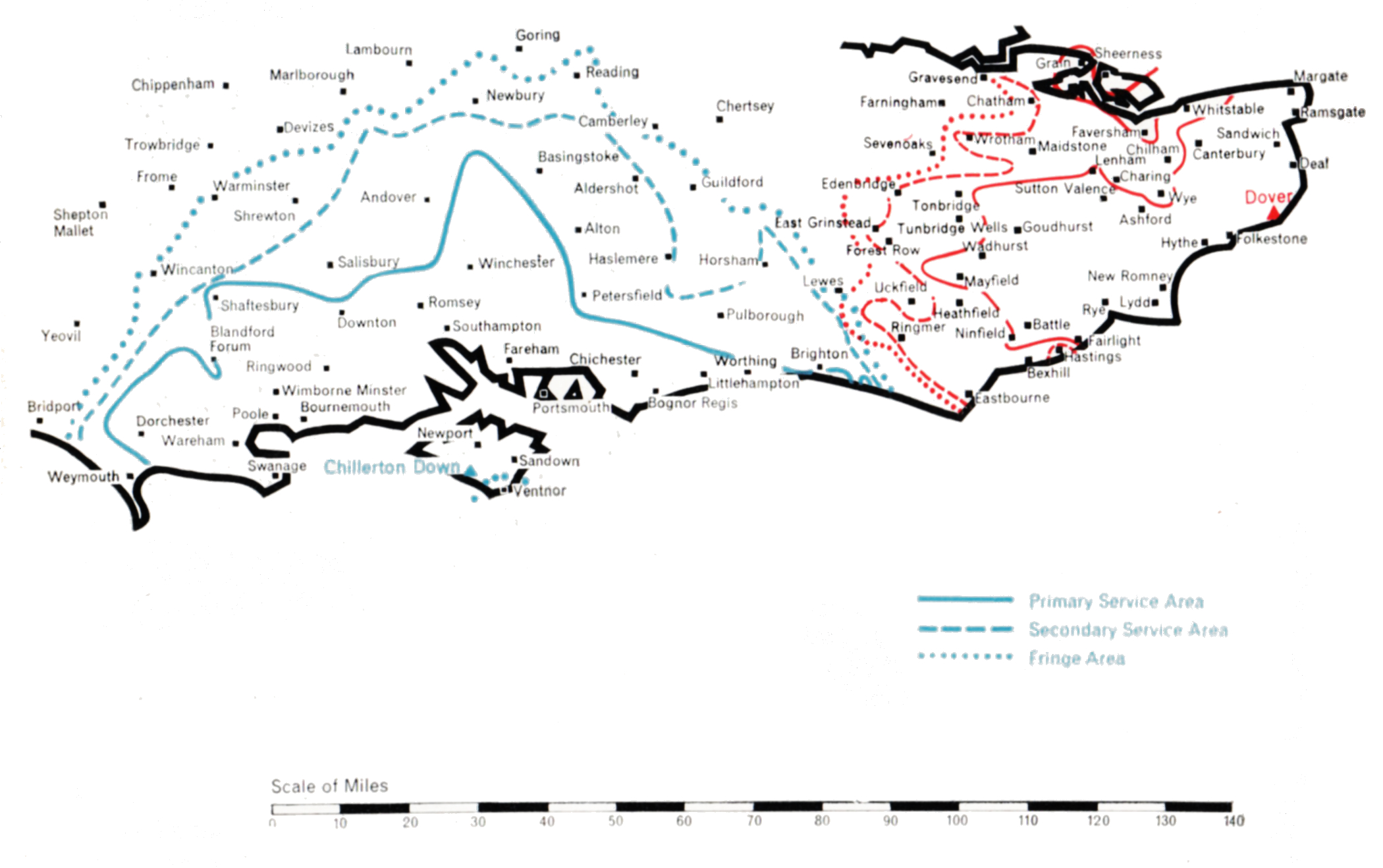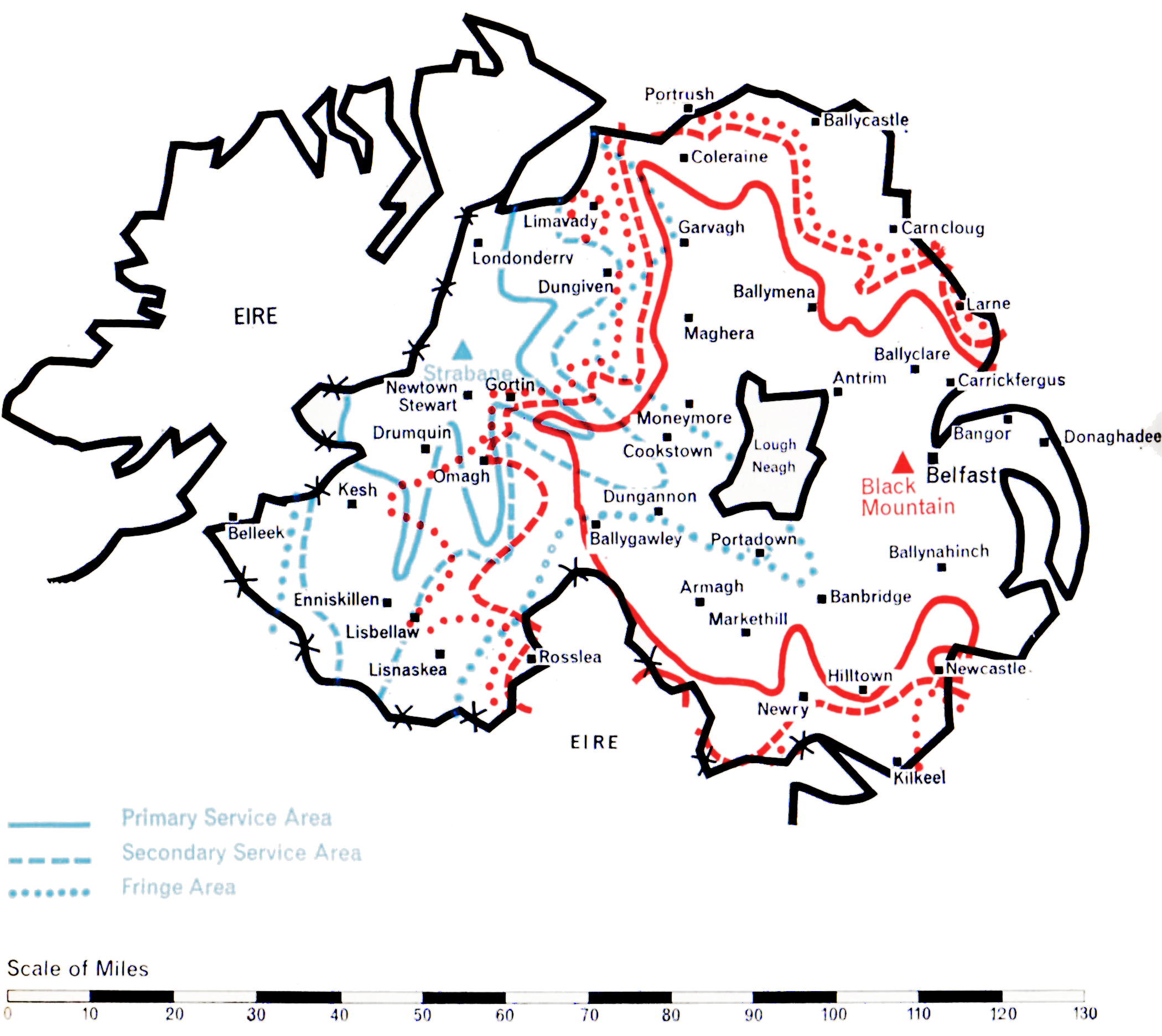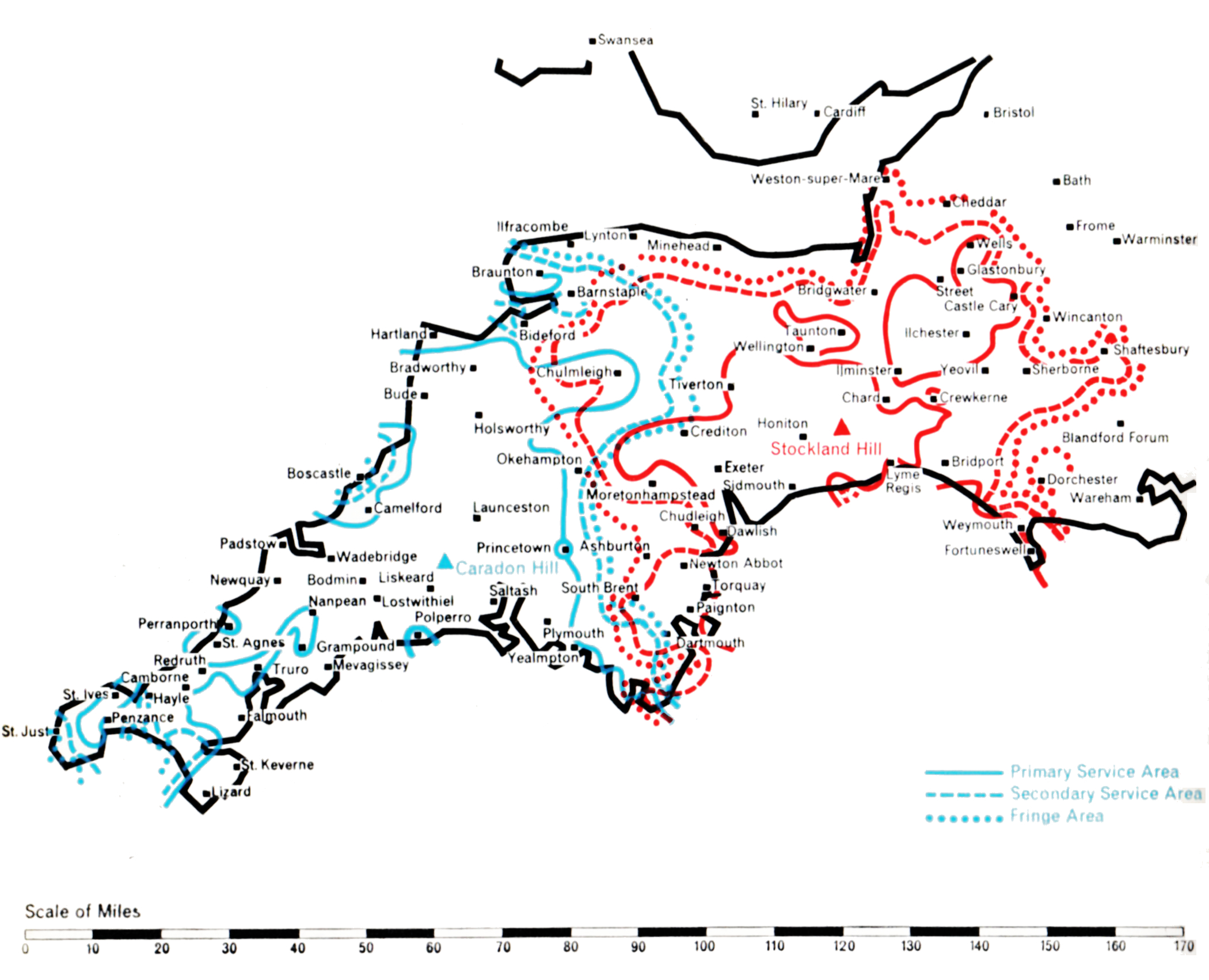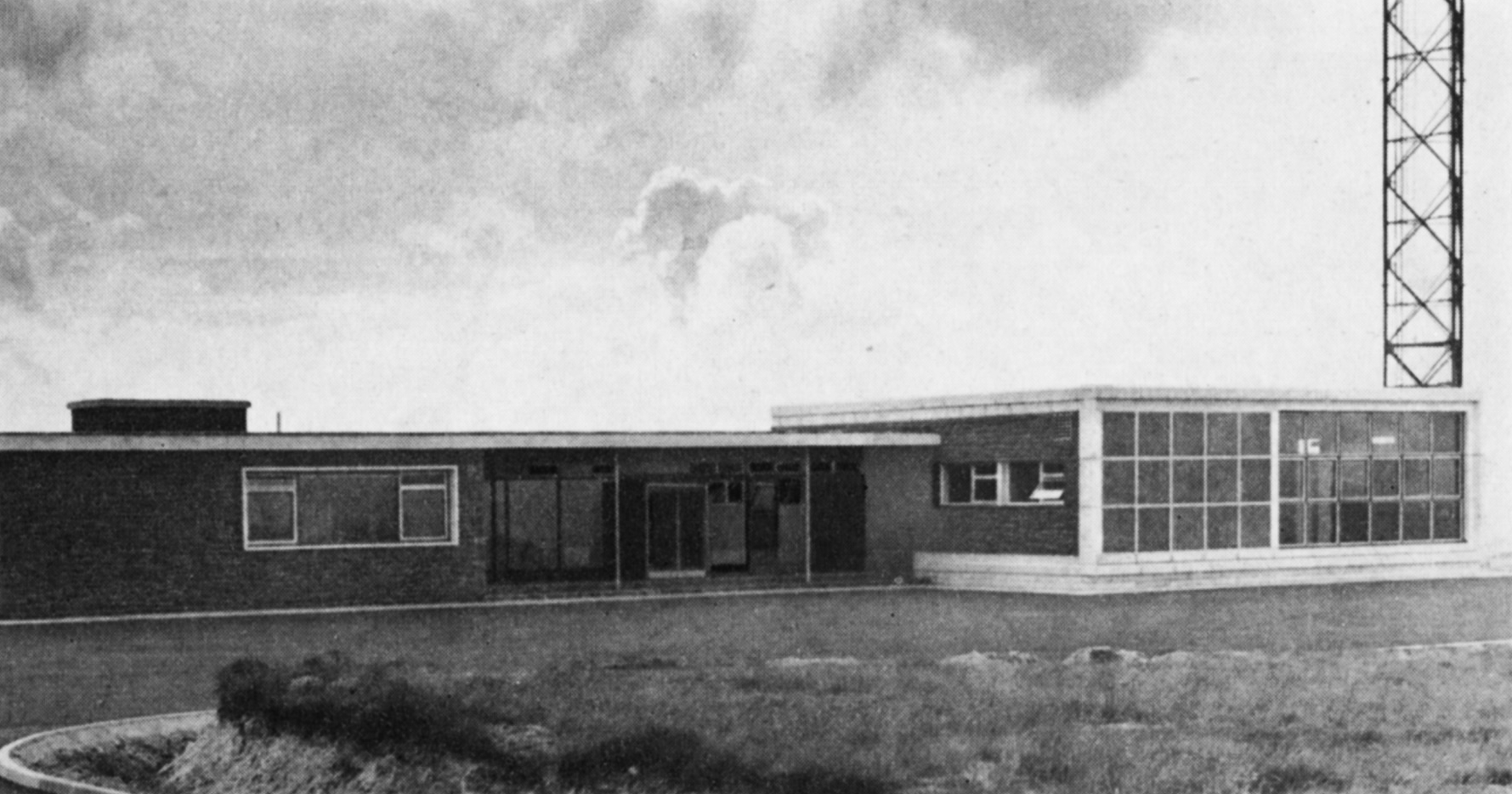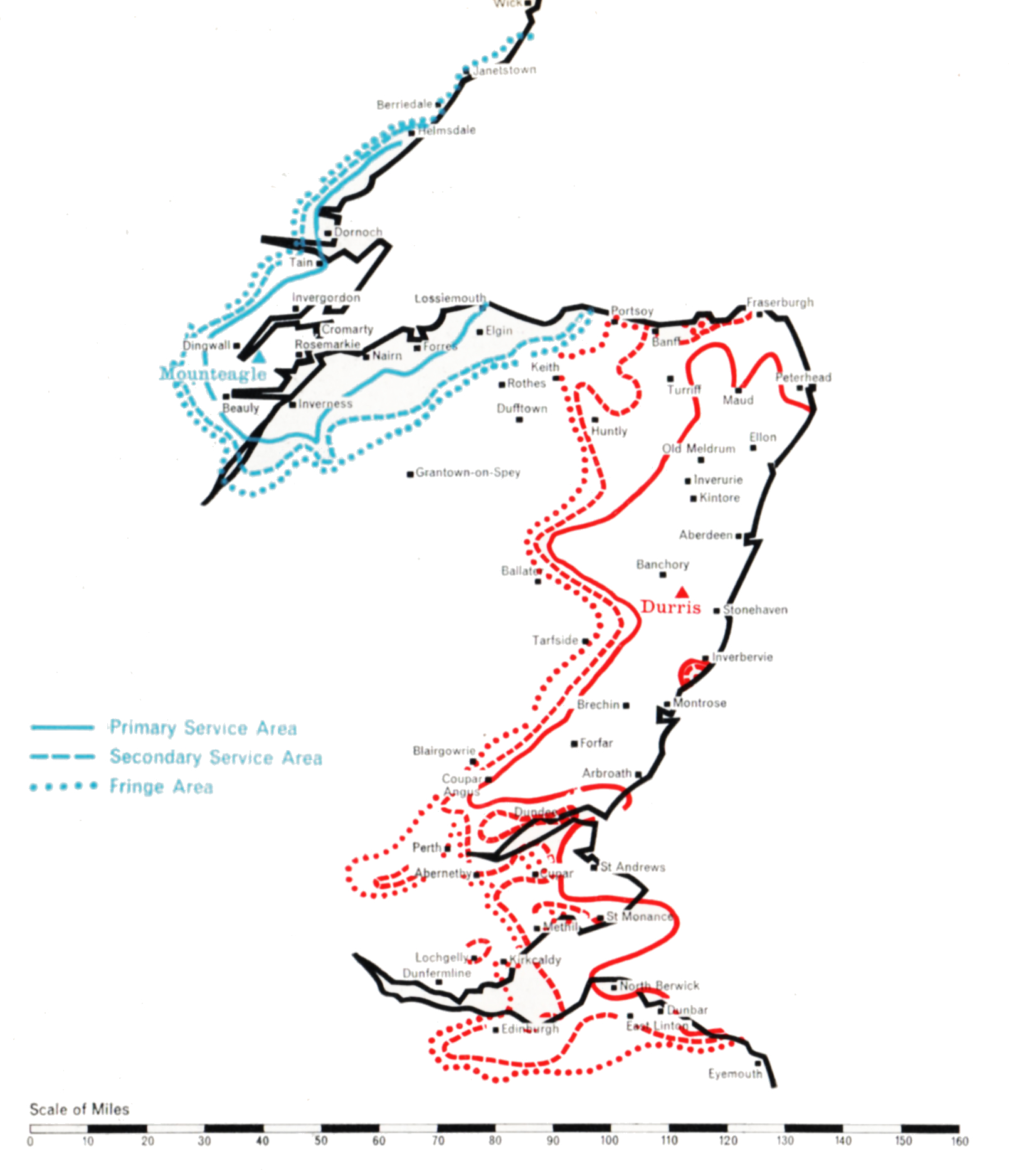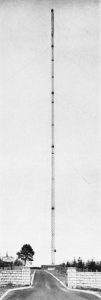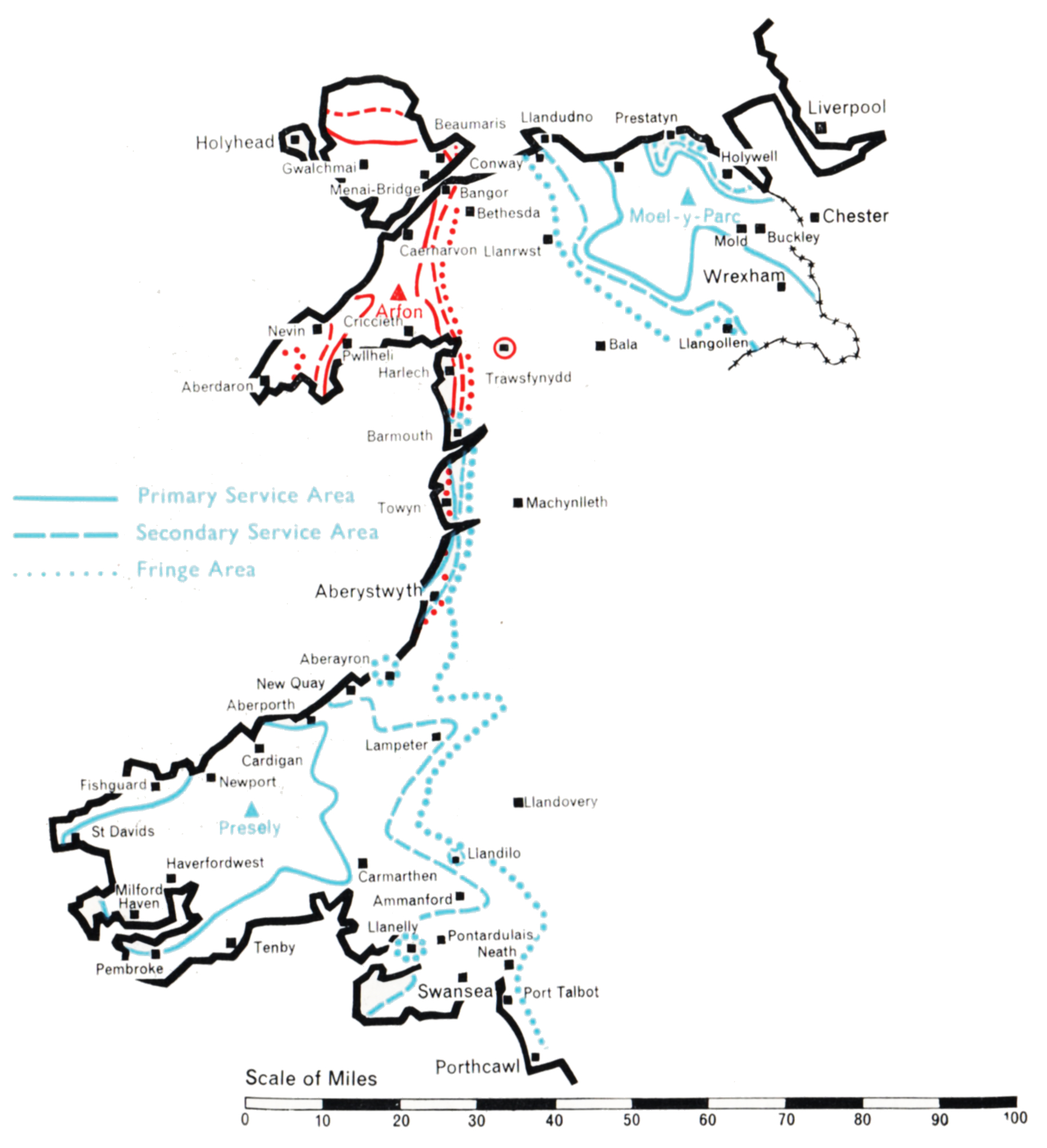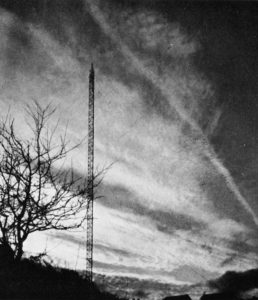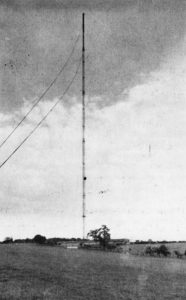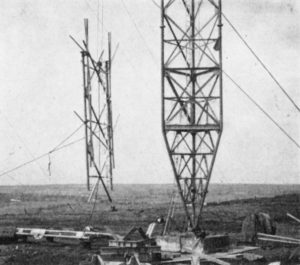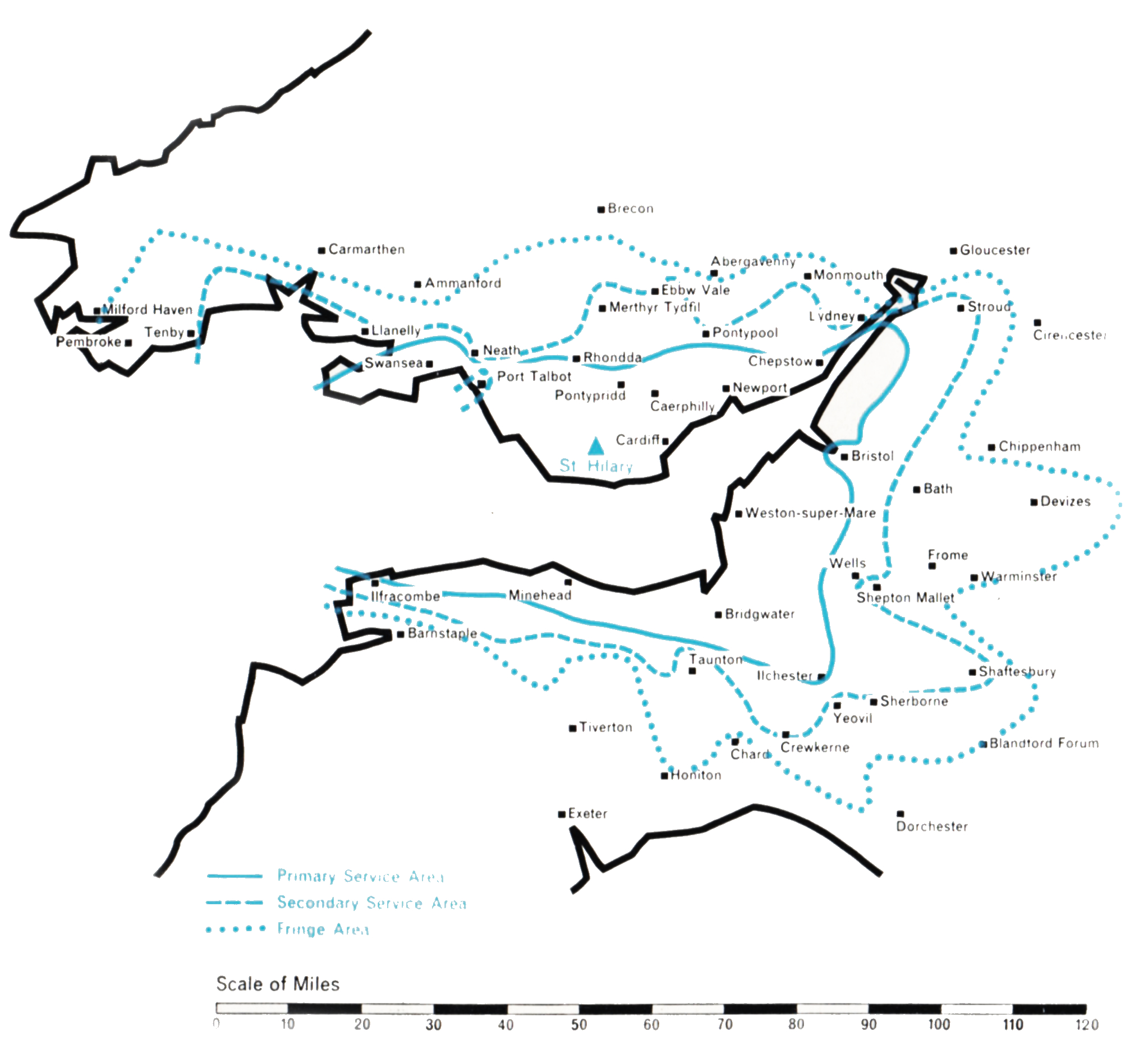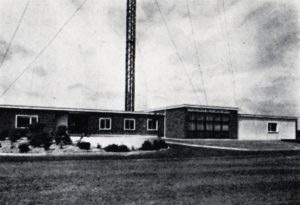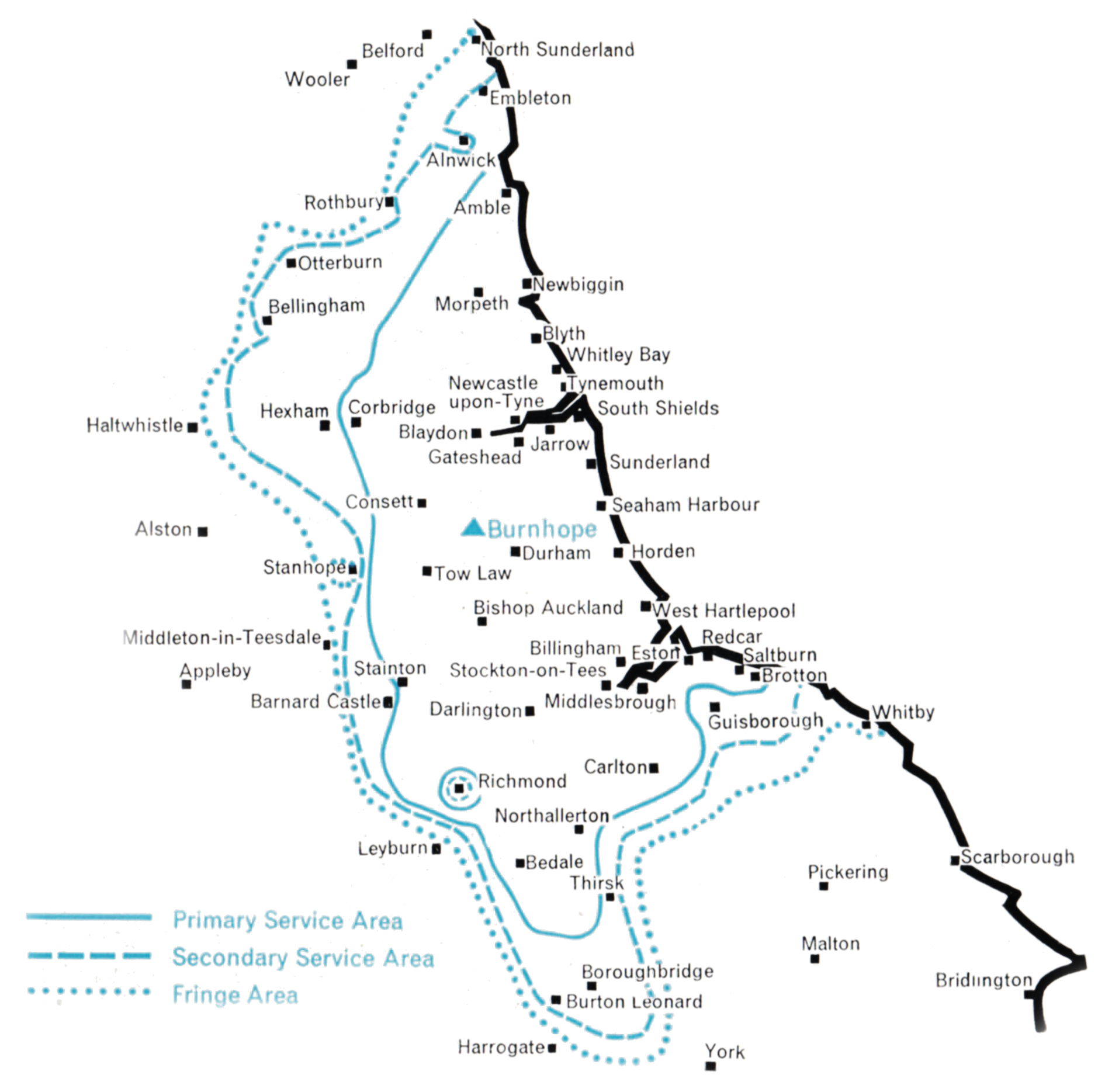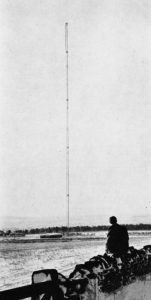- CHILLERTON DOWN
- Population within measured contours: Primary 1.91 mn, Secondary 0.53 mn, Fringe 0.52 mn. Total 2.96 mn.
- Channel: Band III Channel 11 (vertically polarised)
- Vision Carrier Frequency: Actual 204.75 Mc/s
- Sound Carrier Frequency: Actual 201.25 Mc/s
- Effective Radiated Power: Vision 100 kw maximum. Sound 25 kw maximum.
- Power of Transmitters: Vision (peak white) 4 kW. Sound (carrier) 1 kW
- Heights above sea level: Site 550 ft. Mean aerial 1,250 ft.
- Location: 1° 19′ 40″ W, 50° 38′ 55″ N.
- DOVER
- Population within measured contours: Primary 0.50 mn, Secondary 0.57 mn, Fringe 0.27 mn. Total 1.34 mn.
- Channel: Band III Channel 10 (vertically polarised)
- Vision Carrier Frequency: Nominal 199.75 Mc/s. Actual 199.7135 Mc/s
- Sound Carrier Frequency: Nominal 196.25 Mc/s. Actual 196.1985 Mc/s
- Effective Radiated Power: Vision 100 kw maximum. Sound 25 kw maximum.
- Power of Transmitters: Vision (peak white) 4 kW. Sound (carrier) 1 kW
- Heights above sea level: Site 450 ft. Mean aerial 1,175 ft.
- Location: 1° 14′ 58″ E, 51° 6′ 40″ N.
Chillerton Down (Channel 11) and Dover (Channel 10)
Company: Southern Television
Chillerton Down was the first of the two stations built to serve the south and south-east coastal areas of Britain. It was designed to cover central southern England, the important agricultural and holiday area along the coast from Weymouth in the west to Brighton in the east, together with the great ports of Southampton and Portsmouth and, inland, the county of Hampshire and adjoining parts of Dorset and Wiltshire. A BBC Band I station existed at Rowridge, on the Isle of Wight. In conformity with the Government’s policy the Authority decided if possible to build its Band III station close to Rowridge. The site selected was on Chillerton Down, 550 ft. above sea level on the south side of the island. Opposition to a second television mast on the island was raised on grounds of amenity. However, the alternative of building at Rowridge a more massive and commanding tower to carry both the ITA and BBC television services and the BBC’s VHF sound services proved even less welcome, and the Authority’s proposal to use Chillerton Down for a slim 750 ft. mast was accepted.
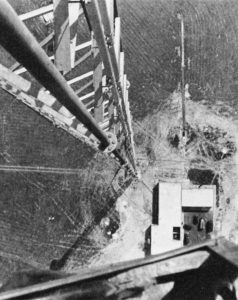
The transmitting aerial has a semicircular power-radiation pattern, oriented to direct 100 kW in both directions along the coast as well as landwards, but radiating very low power across the English Channel to prevent interference with the services of Radiodiffusion-Télévision Francaise. Chillerton Down went into service on 30th August 1958 and serves the intended area well.
The sister station at Dover presented unusual problems. The general requirement was to serve the south-east corner of England not covered by Chillerton Down or Croydon. The site of the station was determined by the need to serve Folkestone and Dover, which lie at sea level under high cliffs. The solution was to build the station on the high cliff road linking the two towns. Church Hougham, 450 feet above sea level, was used and from a 750 ft. mast a signal could be directed into both towns. At the same time the station had to link up with the service area of Chillerton Down beyond Eastbourne, 5o miles west along the coast. 100 kW was sufficient to provide an adequate service for Eastbourne and the intermediate coastal towns, and there were no inhibiting power restrictions. Northward, to serve the towns on the Thames estuary not covered by Croydon, 10 kW to 20 kW e.r.p. was adequate. However, viewers in France had to be protected from interference to their reception of the signal from the Rouen station. Calculations showed that Dover must restrict its power to less than 1 kW over an arc of 90° towards the French Coast. It was no mean task to construct a transmitting aerial to do this, and at the same time to radiate 100 kW westward. Test transmissions were made for many weeks, during which the Authority’s engineers developed a measuring technique, using a helicopter, to check the the radiation pattern of the transmitting aerial. This difficult operation accomplished, Dover went into service on full power on 31st January 1960.

